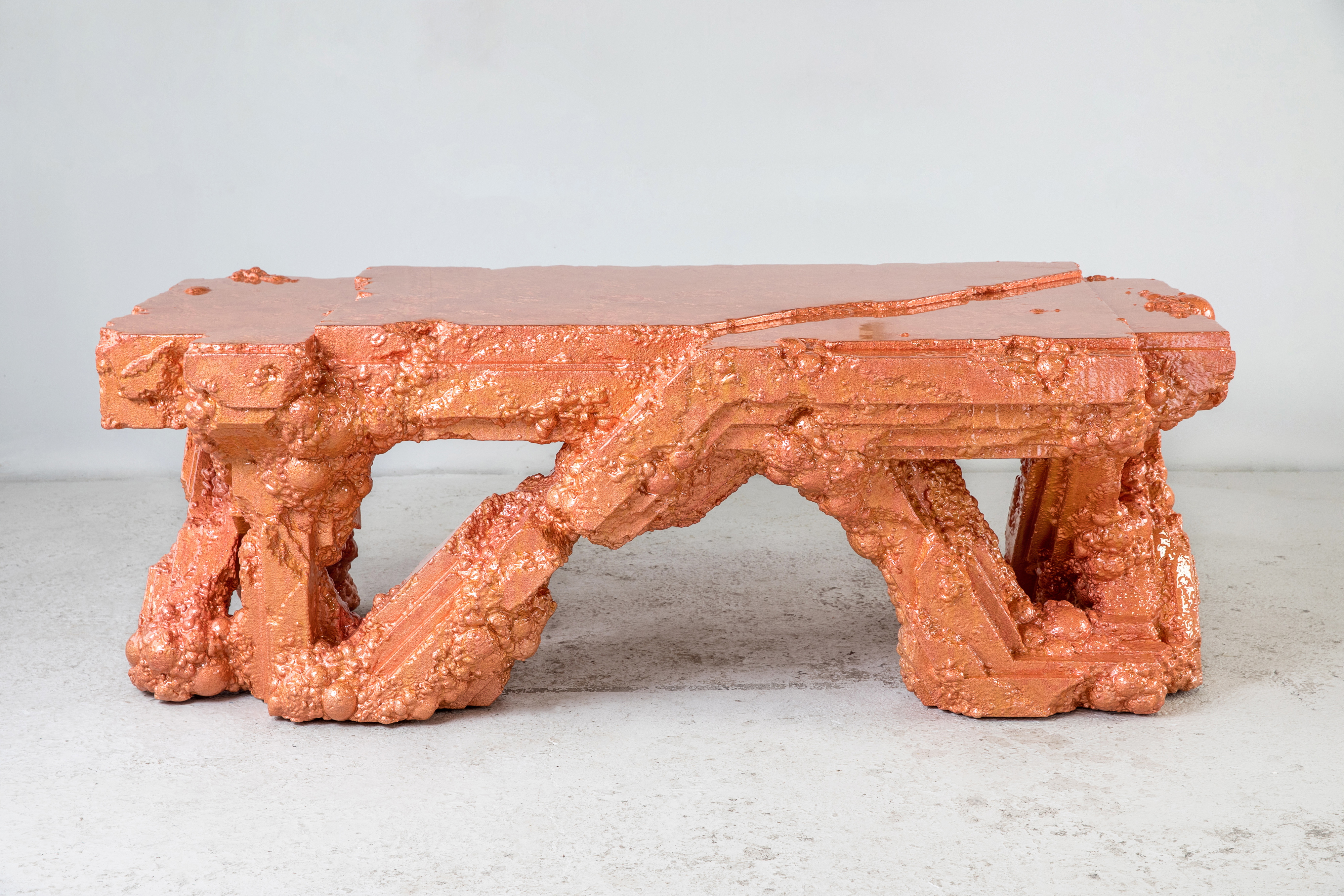Imitation Game
None of these objects is what it initially appears to be — but then, what exactly do they appear to be in the first place? The closest to a true trompe l’oeil is Faye Toogood’s Box Bench, which, when you see it in a photo, looks as if it were just a maquette made of simple cardboard. When experienced in person, though, it’s another matter. The scale is way off — the quick gestures of the tape and tears improbable at such a large size — and there is a vague but palpable sense that this is a monumental object, weighty and implacable. The work is part of Toogood’s new collection Assemblage 6, in which small, speedily rendered sketches are recreated at full scale, and with great fidelity. Depending on how you look at it, the project either short-circuits the usual developmental process of design, leaping right prototype to finished object; or slows the process way down, taking the prototype as sacrosanct, and elaborately, even lovingly replicating its every feature, wrinkles and all.
Toogood’s gamesmanship is not so much in one thing imitating another, but the creation of a third, stranger thing, in which appearance and actuality are both equally implicated. This counterintuitive, somewhat alien quality is arguably present in all mimetic objects. Consider Chris Schanck and Max Lamb’s pieces shown here, both of which nominally look like copper (Cu, Schanck’s title, is the chemical symbol for the element). But neither resembles conventional metalwork at all. The color and burnished sheen of copper are there, but they’ve been released from the material’s other usual properties.
Schanck has achieved this using his Alufoil technique — metallic foil atop resin atop Styrofoam and other salvaged materials — while Lamb employed thermal spray, a high-temperature technique borrowed from the construction trades, which is perhaps best imagined as a combination of welding and spray paint, and which he applies to a polystyrene substrate. Appearances, they say, can be deceiving. But it’s much more interesting when, as here, they take on a life of their own.
DNA is a collaborative essay project, intertwining three gallery programs into a single, generative presentation.





